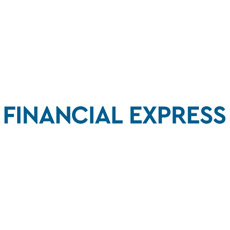In the News

Mutual Fund Investment: Is it right time to invest in Credit-Risk Funds? Find out
Debt mutual funds are considered less risky due to their little exposure to direct equities, although they are exposed to risks associated with trading of debt instruments.
Publicity of mutual funds (MF) comes with a warning – ‘MF investments are subject to market risks. Please read offer documents carefully before investing’. While equity mutual funds invest in equities and have direct exposure to stock market volatility, debt mutual funds are considered less risky due to their little exposure to direct equities, although they are exposed to risks associated with trading of debt instruments.
However, in this debt category, which is perceived as less risky, there is a category of mutual funds with the word ‘risk’ in the name itself – Credit-Risk Funds – which may scare the investors more. “When a normal person hears this name, he/she considers it as a most risky fund. Therefore this name “Credit Risk”, I feel, is a misappropriate name given by the Mutual Fund Industry,” said Financial Coach and Corporate Trainer Prof. Rahul Ranjan.
Explaining the investment patterns of such funds, Ranjan said, “These types of funds invest at least 65 per cent in AA and below rated papers, but in investment grade rated securities. According to our regulator anything, which is BBB and above, is considered as investment grade. Below BBB is considered as ‘below investment grade’. Very rarely you will find these types of funds invest in below BBB rated debt securities. Such funds have a capacity to generate better return because they invest a major portion in below rated papers.”
However, asking the investors not to overlook the risks associated with such funds, Ranjan said, “These types of funds face downgrade and default risk. In such events it becomes very difficult for the fund manager to exit from his holding. This leads to low returns for investors.”
“Investor should select only those Credit-Risk Schemes from the AMC’s who have a better track record of managing debt funds,” he added.
Talking on suitability of these funds, Ranjan said, “These Credit Risk funds are suitable for those persons who are looking for better and tax efficient returns with a minimum time horizon of three years. If you are in a highest tax bracket, and planning to invest in Fixed Deposit for more than three years, then this is a better alternative.”
Such funds have potential of generating income in two ways – higher interest on lower grade instruments and capital gains in case lower-rated securities, in which investments are made, get upgraded by the rating agencies resulting in higher market value.
Currently, the gaps between the higher and lower-rated funds have widened and the difference in interest rates offered by AAA-rated and AA-rated bonds have become around 150 basis points. So, is this a good time to invest in Credit-Risk Funds?
“Yes, one can selectively invest in credit risk funds,” said Pranob Gupta, Principal Fund Manager – Structured Debt, IIFL Asset Management, adding, “With increasing liquidity (reasonably benign inflation, potential rate cuts, monetary easing overall) rates are likely to come off over time and therefore it makes sense to consider credit investing and lock into duration now.”
Gupta further said, “Potential policy stability given the recent electoral mandate also means that some of the execution risk intrinsic to credit should also be more predictable/ alleviated.
“One can consider an allocation in line with overall investment in alternate investments as an asset class. Focus should be on quality, rigour of process, counter-party selection etc,” he added.

